Moto G5S Plus detailed review
From around end of 2016 to now in 2017, the Indian smartphone market has seen a change. Product personnel from various companies unanimously agree that Indians are buying more in the sub-20k range today, than they were till some time ago. The result? A flurry of smartphones in that range. Which is perhaps why Motorola sees it fit to flood the 10-20k range with its devices. The company now has four phones under the Moto brand here, and at least two more from Lenovo. One of these is the Moto G5S Plus (review), which details Motorola’s take on the dual-camera smartphone.
The Moto G5S Plus picks the monochrome and RGB sensor combination, skipping the arguably more popular telephoto+wide angle lens combo. Theoretically, having the second sensor in monochrome configuration allows the Moto G5S Plus to capture more light and better details, which in turn should lead to better photos overall. The Moto G5S Plus is slightly more expensive than the Moto G5 Plus, which usually means it’s got a better camera. What we try to find out in this review is whether that’s actually true.

Camera
While the camera configuration doesn’t necessarily allow better bokehs, Motorola’s camera app does provide a “Depth-mode” to shoot them. That’s the only real difference between the camera apps on this phone and the Moto G5 Plus. You will see three dots on the bottom right of the camera, which can be used to turn on the bokeh mode.
Motorola hasn’t detailed the sensors used on this device, but it seems like this is the same as the camera on the Moto G5. And therein lies the problem. With weaker sensors, the Moto G5S Plus actually doesn’t make for a big upgrade over the G5 Plus. If you’re buying this as an upgrade, we’d recommend you save your money.

Daylight shot taken using the Moto G5S Plus

100% crop of image above
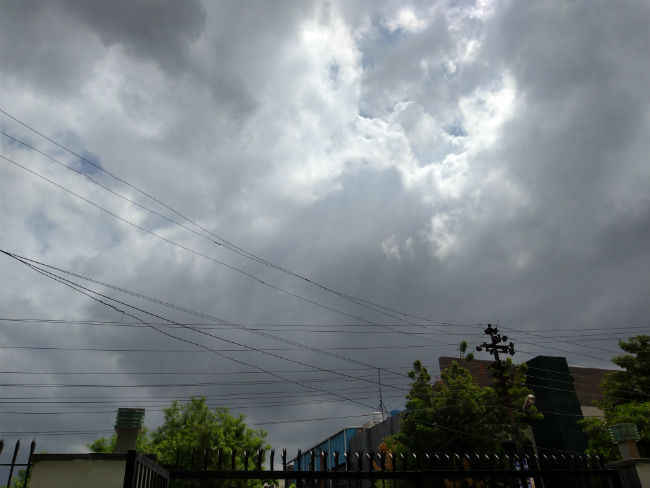
The HDR mode is quite handy on the Moto G5S Plus
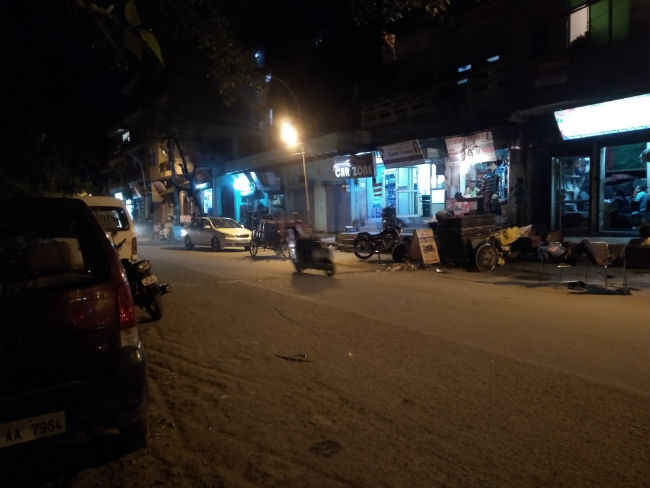
Low Light shot taken using the Moto G5S Plus
On well lit conditions, the Moto G5S Plus produces nice details and crisp colours. Dynamic range is low on auto mode, but the HDR mode is quite useful. Even low light produce are reasonably well detailed, with decent colours. That said, we have clicked better photos with its predecessor often, and the Moto G5S Plus also overexposed photos sometimes.
The primary concern with the G5S Plus’ camera is that it’s not dependable. The two sensors working together make for a really slow camera. Processing speeds are quite high, and the phone actually freezes for a few moments when shooting using the depth mode. That, essentially makes the Moto G5S Plus’ camera almost unusable when you need quick or back-to-back photos. Also, it’s not exactly a simple point and shoot camera. It will do well when you have enough time to shoot, as in macros, but it will often fail miserably when you just pull out the phone, point and shoot.
Depth Effect
The depth effect on the Moto G5S Plus is meant to create background blurs. They’re of course not of DSLR quality, but the phone does do better than most single camera smartphones. However, the G5 Plus isn’t the best at this effect and the depth effect is not useful when shooting outdoor photos at night, or other low light situations. Also, the depth mode blurs out the edges of the subject, which is important for good bokehs.

Moto G5S Plus Depth Mode

The depth mode loses edge details, like hair
Essentially, you’ll get better usability than a single camera phone like the Nokia 6, but the phone won’t surpass the Xiaomi Mi A1’s telephoto+wide angle setup.
Summing up
The camera on the Moto G5S Plus is good as long as you have enough time to shoot. That though makes it a camera that’s tough to depend on. If you’re fine with that, the G5S Plus should suit your needs.
Click here to see full sized images shot by the Moto G5S Plus
Front camera
The dual rear cameras are accompanied by an 8MP front camera, with an LED flash next to it. The flash will fire automatically in most indoor and low light conditions, but the camera software does a pretty good job of keeping its impact to reasonable levels. It will, however, make photos look a tad softer than they should be.
This happens when you shoot without flash as well, but the Moto G5S Plus doesn’t oversoften photos, making your face look unnatural. To the contrary, it applies the right amount of softening, so as to hide skin blemishes, while producing some details as well. The front camera was actually surprisingly good on this device.
Build and Design
The other big change from its predecessor is in design. The Moto G5S Plus looks somewhat similar in photos, but it actually brings a pretty substantial change in design. Motorola has created a more seamless and premium feeling design. There are slight curves on the back and a spherical camera module, that comes with a noticeable bump. The edges are chamfered, and the phone is made entirely of metal.
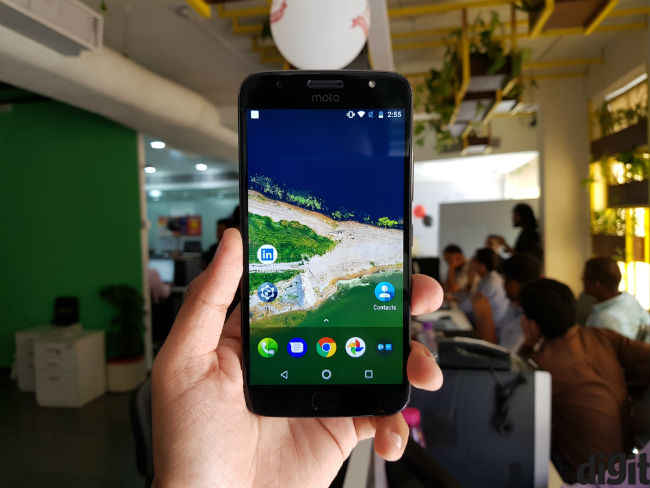
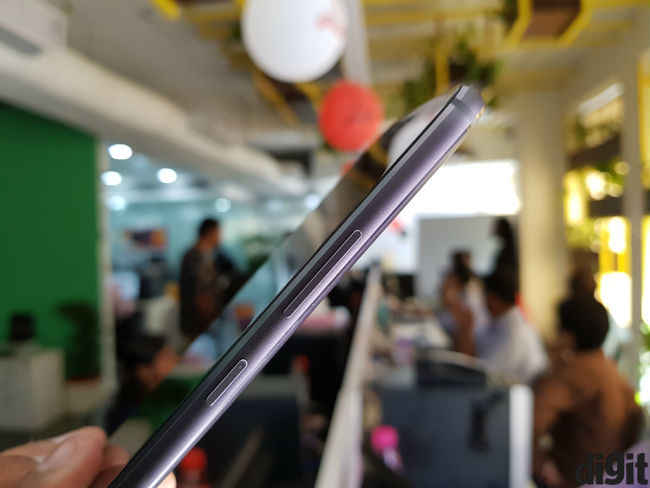

Overall, the G5S Plus feels quite premium and seamless. That’s literally true when compared to the G5 Plus, since this phone has fewer seams on it. The body is a single piece of aluminium, that makes for a more solid feel. It’s a slim design and light enough to not be a hindrance when kept in your pocket. Weight is evenly distributed as well, so the phone doesn’t feel top heavy.
The power button and volume rocker are on the right side, and they’re easy enough to reach. The Moto G5S Plus though is not a phone that’s easily used with one hand, thanks to a wide facade and thick glossy strips of plastic around the display. The fingerprint sensor is on the front, below the display.
Personally, I like the seamless metallic construction of the Moto G5S Plus. It’s not the out and out segment leading design, but it’s certainly one of the better designed budget phones out there.
Display
You get a slight bump in display size with the Moto G5S Plus. It has a 5.5 inch FHD display, that’s identical to the Moto G5 Plus in terms of colour saturation and touch performance. Touch response is good and the display is resistant to fingerprints as well, so it doesn’t feel sticky when swiping across screens or apps. It’s also bright enough to be used in outdoor conditions and viewing angles are great.
The only real hindrance here are the thick bezels on either side of the display. They make things less immersive and also hinder the overall design of the phone.
Performance
Barring the camera, the Moto G5S Plus is almost identical to the G5 Plus, and its performance is one of the things that’s same. You get a Snapdragon 625 chipset inside, with eight Cortex A53 cores, clocked at 2GHz.
As with many Motorola phones, the Moto G5S Plus presents a fluid stock Android experience, with minimum lags. App load times are reasonably low and in-app performance doesn’t raise a lot of questions. It’s not an out-and-out fast phone, but the Moto G5S Plus would suffice most use cases. Barring the camera app, there’s really no app on the phone, or a downloaded third party application that feels slow here.
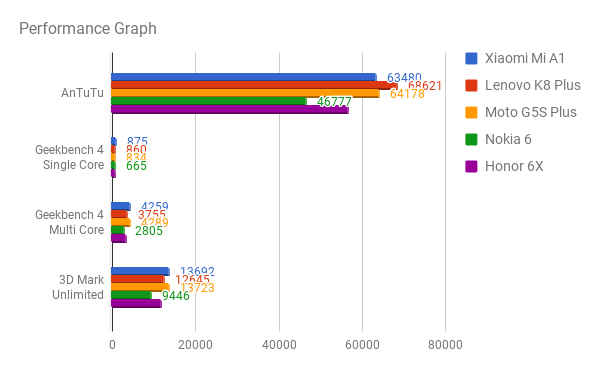
The Snapdragon 625 is an efficient processor from a thermal point of view as well. Inside air conditioned rooms, the Moto G5S Plus never rose to a maximum of 40 degree celsius while gaming. It can record 4K video at 30fps, which raised temperatures to around the same levels as well. It does get hot outdoors in the Delhi heat, but that’s not abnormal or unexpected.
Battery
A 3000 mAh battery can be considered small by today’s standards. Most of Motorola’s competitors provide 4000 mAh batteries, and battery lives on budget devices are quite good as well. The Moto G5S Plus does last a work day, which though sufficient, is not the best you can get in this price segment. You will usually get by with a charge every night, while heavier users will need a quick top up during the day. Motorola’s turbo charging technology does come in handy here, allowing a quick top up with the charger you get with this phone.
Bottomline
Motorola is only selling the 4/64GB variant of this phone in India, which is the right choice in our opinion. So, the Moto G5S Plus gives you dependable performance and a reasonable camera. It’s certainly a phone worth considering, but it’s not an upgrade or replacement to the Moto G5 Plus. From our testing, it seems the predecessor had a more dependable camera, while other aspects remained the same. At its reduced price, the Moto G5 Plus offers better value for money, while the Moto G5S Plus is for those who are hell bent on dual-cameras and want stock Android software too.
How it compares
As far as the camera is concerned, the Xiaomi Mi A1 (review) and Moto G5 Plus have more dependable cameras than this phone. The G5S Plus can certainly take good shots, but it’ll often let you down when you most need it. To that effect, the other two devices are better phones to buy, especially for stock Android lovers.
However, if you compare this against a phone like the Nokia 6, the Moto G5S Plus gets you a much better camera, fast and dependable performance and reasonable battery life, making it the better choice.
[ad_2]
Source link

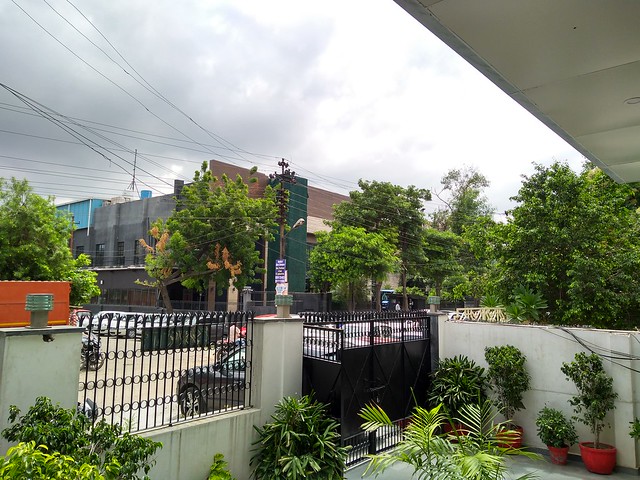
Post a Comment